advertisement
advertisement
Hamsters are omnivores and can eat almost anything, but due to their ability to store food in their
pouches, it is not recommended to feed them too much human daily food. So what is the correct way to
feed hamsters?
Due to the small size of hamsters, daily feeding of vegetables and fruits can provide them with the
necessary water. You can choose to feed hamsters with apples, cucumbers, tomatoes, cabbage, etc.,
without the need for additional water supply. If you want to provide hamsters with additional water
supply, remember to boil and disinfect the water before feeding.
When feeding hamsters on a daily basis, you can choose from a variety of foods; For example, fruits
and
vegetables such as apples, bananas, carrots, cucumbers, pumpkins, as well as grains such as wheat,
oats,
and corn can be chosen; You can even provide hamsters with some boiled chicken breast or egg white
to
supplement protein.
In terms of snack selection, hamsters particularly love sunflower seeds, but due to their high fat
content, excessive consumption can lead to obesity, picky eating, and even malnutrition. Therefore,
sunflower seeds can only be used as snacks or non essential items to enhance relationships, and
should
not be fed too much. A maximum of one or two sunflower seeds per meal is sufficient. At that time,
winter had arrived, so you could feed more sunflower seeds to hamsters to store fat and get through
the
cold winter.
Although hamsters are omnivorous animals, there are also foods that hamsters cannot eat, such as
spicy
peppers, onions, ginger, garlic, chives, as well as peach, plum, apple kernels, etc. It is said to
cause
an increase in the heartbeat of hamsters, which may lead to symptoms such as shock. The potassium
ion
content of these things is relatively high, and if hamsters consume them excessively, it can easily
cause tachycardia and death. However, for hamsters, their daily food contains excessive amounts of
oil
and salt, and consuming human food can impose a great burden on their internal organs.
Generally speaking, even obese hamsters have a longer lifespan than thin hamsters. Because when
hamsters
get old, various diseases come; At this time, it will consume the calories in the hamster's body.
Thin
hamsters have little body fat to burn and are prone to rapid death, while strong hamsters can rely
on
their body fat to support them for longer periods of time and have a longer lifespan.Therefore, it
is
recommended to keep hamsters strong and robust, but not too obese, as it can easily breed various
diseases.
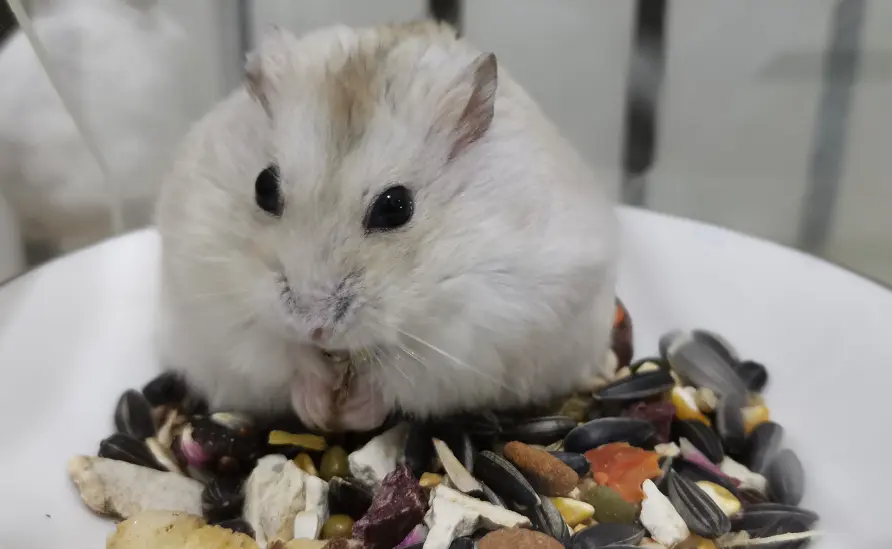
Compared to cats and dogs, the lifespan of hamsters is relatively short, so the time they can
accompany
you is also very short. Don't choose to keep hamsters just because of a momentary impulse; Due to
the
size limitation of hamsters, even if there are physical abnormalities, they are not easily detected,
so
taking care of hamsters requires extra care; Finally, hamsters also require regular cleaning and
daily
companionship from their owners.Raising a hamster initially requires a significant expense to
purchase
various items to welcome its arrival, but once you are fully prepared, raising a healthy hamster
will
not incur significant costs. You only need to regularly purchase feed and some daily consumables.
If you are determined to raise a hamster, then start by choosing the hamster you like. The main pet
hamsters are divided into two types: golden bears and dwarf mice. It is recommended that you
personally
choose from the corresponding stores. Generally, choose hamsters that are over one month old,
emotionally stable, and have a personality closer to humans.Due to their different breeds, dwarf
mice
have a smaller body size but a gentle personality, and can interact freely with their owners after
becoming familiar with them; The golden bear has a larger body size, and the feeling of caressing
and
interacting with it is more obvious. However, it should be noted that its large size brings a
irritable
temperament and stronger destructive power. You need a more sturdy cage to keep it and pay attention
to
the scale of interaction, otherwise it is easy to be bitten.
Once you have selected your desired hamster, the next step is to choose the appropriate size of
cage,
sand, feed, and kettle based on the hamster breed; Don't forget to set up toilets and bathrooms for
hamsters in the cage, as well as some items that can entertain them (such as running wheels,
tunnels,
etc.)
Chinchilla is a cute and special animal. Before becoming a pet chinchilla, reading this article may
give
you a better understanding of them and help you better care for them.
Adult chinchillas are generally 40-50 centimeters long, with their tail occupying one-third of their
body length and a lifespan of 10-20 years; Chinchillas has a gentle and non aggressive personality,
and
can be raised alone or in groups; They prefer clean and quiet environments without body odor, making
them ideal family pets; It should be noted that chinchillas is a nocturnal animal that is
particularly
sensitive to sound and odor. When raising chinchillas, it is important to set up the breeding
environment.
Chinchillas teeth grow for life, so they need to grind their teeth. Safe and non-toxic grinding
products
(such as volcanic rock, apple wood, corn cob, etc.) can be provided to Chinchilla, which can clean
their
mouth and kill two birds with one stone. It should be noted that plastic and paper products should
be
avoided from being within the reach of the Chinchilla. If the Chinchilla accidentally ingests these
items, it can cause serious digestive diseases.
The main food of Chinchilla is natural hay rich in fiber, and it is generally recommended to
purchase
specialized feed made from Phleum pratense and alfalfa as the main materials; If you feed your
Chinchilla with fresh grass, a small amount of alfalfa grass is sufficient. Excessive intake of
alfalfa
grass can cause diarrhea in the Chinchilla. Please avoid feeding vegetables, fruits, nuts, and other
foods that can easily cause digestive system abnormalities or even death in chinchillas ; Please do
not
feed Chinchilla with high-fat, high sugar, or high water content foods.
It is recommended to use boiled and disinfected water, distilled water, or mineral water purchased
from
supermarkets for Chinchilla drinking water
In terms of environment, the suitable living environment for chinchillas is around 26 degrees
Celsius,
and environments above 26 degrees Celsius can easily lead to heat stroke in chinchillas; Pay
attention
to keeping warm during winter or when the weather turns cold; At the same time, it is necessary to
maintain a humidity of around 50% to reduce the risk of skin diseases in chinchillas.
Due to the extreme timidity and sensitivity of chinchillas, it takes a long time to cultivate a
familiar
relationship with its owner; You can establish trust through feeding, caressing, grooming, and other
methods, but be careful not to be too aggressive in your movements. After becoming familiar with
their
owner, Chinchillas will have a high level of interaction, actively approaching their owner for
touch;
Sometimes there may be sounds that catch the owner's attention. Compared to being held in the palm
of
the owner's hand and caressed, many chinchillas also climb on the owner's body. This is to pay more
attention to the movements of the chinchillas and not to fall and injure it.
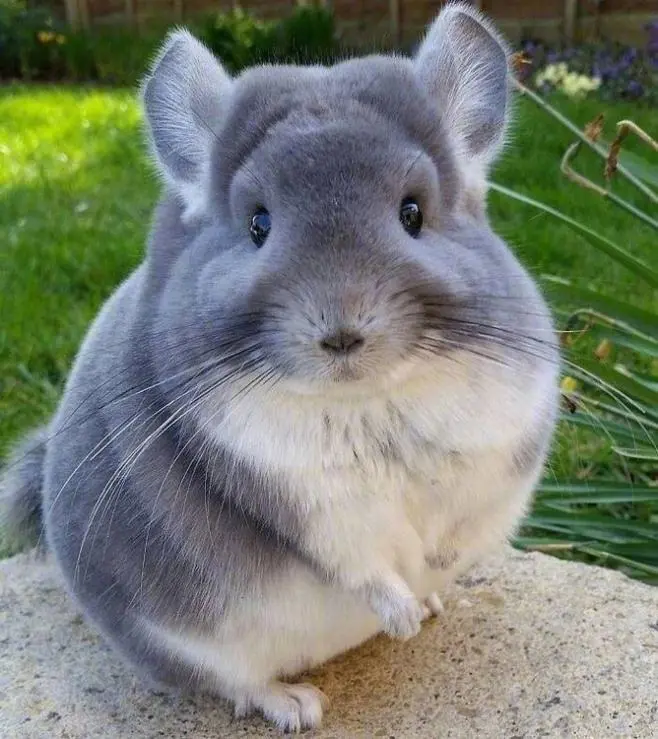

Constipation
Constipation is a common disease when raising a chinchilla; Usually caused by irregular feeding,
changing of food or excessive intake of snacks, as well as weather changesConstipated chinchilla
cats
generally have poor mental health and are unwilling to move around. Long term and severe
constipation
can cause bloating, seriously affecting the health of chinchilla cats and potentially leading to
death.can purchase dimethyl silicone oil tablets from a pharmacy, use one tablet per day, grind half
a
tablet each time, soak in water and feed, or follow the doctor's advice at a pet hospital.
Heat stroke
chinchilla heatstroke is usually caused by the temperature inside the cage reaching 26 ° C or above
and
the lack of air circulation, which makes it impossible to dissipate heat through cold and heat
exchange,
resulting in an increase in body temperature. Or if the exercise time is too long and the body heats
up.
The main symptoms are lack of energy, general weakness, loss of appetite, significant increase in
body
temperature, fever and redness in the ears, increased and accelerated heartbeat, frequent and
shallow
breathing difficulties, and a burning sensation in exhaled breath. The initial manifestation is a
short-term excitement. Running wildly everywhere. After returning to the cage soon, it will enter a
coma
state. Severe cases may result in white foam on the mouth, usually when lying down with legs
extended or
sideways. If not rescued in a timely manner, death may occur due to suffocation or heart failure.
The rescue measures for heatstroke should be timely, the faster the detection, the better, and the
faster the treatment, the better. Firstly, transfer the cat that has already fallen into limb
paralysis
and weakness to an environment with a temperature below 26 °C as soon as possible. Then apply wind
oil
essence to the ear tips of chinchilla to cool down. After suffering from heatstroke, it is generally
difficult to eat independently, so every four hours, 10 milliliters of water should be fed to
chinchilla
with a syringe; Remember to ensure the diet of the chinchilla and ensure that it has sufficient
physical
recovery.
Long teeth
Long teeth in a chinchilla can only be solved through surgery, but considering its body's tolerance,
it
is very difficult to control the dosage of anesthesia. After surgery, the chinchilla may never wake
up,
so the surgical risk is extremely high. Many pet hospitals do not treat chinchilla, and this surgery
is
not something we can do on our own. Watching a cat slowly weaken and eventually die due to excessive
posterior teeth is undoubtedly a very painful thing. Although the treatment of this disease is
difficult, prevention is very simple: chinchilla relies on alfalfa grass poles and Timothy grass to
help
it grind its teeth, which can effectively prevent it.
Laryngeal obstruction
A chinchilla may swallow too quickly while eating, or bite other foreign objects while grinding its
teeth, which can lead to this problem.
After experiencing laryngeal obstruction, Chinchilla will continuously make neck stretching and
swallowing movements, and there will also be coughing sounds. Severe cases may result in eye
congestion,
hypoxia, and inability to stand due to suffocation, leading to death.
For mild laryngeal obstruction, the method of lubricating the esophagus with vegetable oil can be
adopted. Use a syringe to take 1 milliliter of edible oil and inject it into the mouth, keeping the
head
up to facilitate the entry of oil into the esophagus. Artificial respiration can also be used to
assist
breathing. At the same time, gently pushing the neck with your hand can help with esophageal
peristalsis.
Try to avoid feeding peanuts, melon seeds, and other snacks to chinchilla, and avoid placing plastic
products or other items within chinchillas range of activity to prevent throat obstruction.
According to body size, there are small, medium, and large parrots, and their lifespans vary
depending on the species. Generally, small parrots have a lifespan of 7-20 years, while medium and
large parrots have an average lifespan of 30-60 years. Some medium parrots can live up to around 80
years old.So, if you choose to keep a parrot, please take good care of it and don't abandon it for
any reason.
Here are some parrots suitable for beginners to keep:
Budgerigar
Advantages: Small size, bright colors, easy to raise, and a wide range of choices.
Disadvantages: Loud and prolonged vocalizations, lack of interactivity, low intelligence.
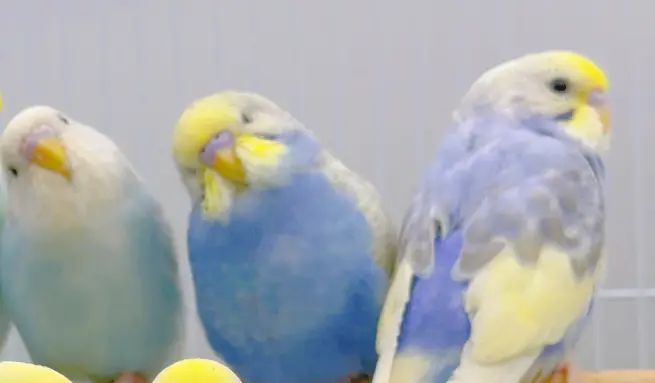
Lovebird
Advantages: Rich variety, with many beautiful color schemes to choose from. High intelligence,
strong interactivity, and the ability to learn skills.
Disadvantages: Likes to chirp and is relatively noisy; But it is very quiet in a dark environment,
you can prepare a black cloth to cover the birdcage and make it quiet.
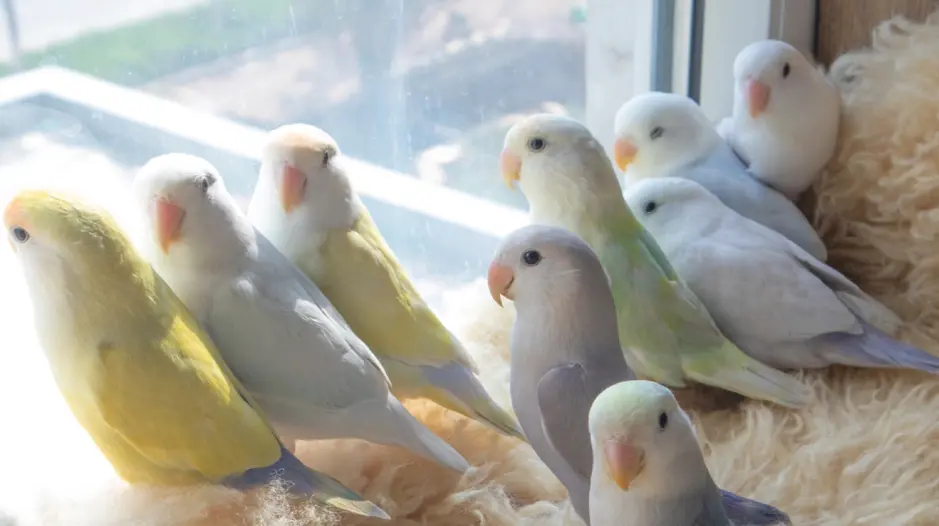
Nymphicus hollandicus
Advantages: Moderate body size, gentle and timid personality, pleasant female voice, males can learn
to
whistle.
Disadvantages: Too much feather powder is not recommended for families with respiratory diseases or
allergies, and there are fewer colors to choose from.
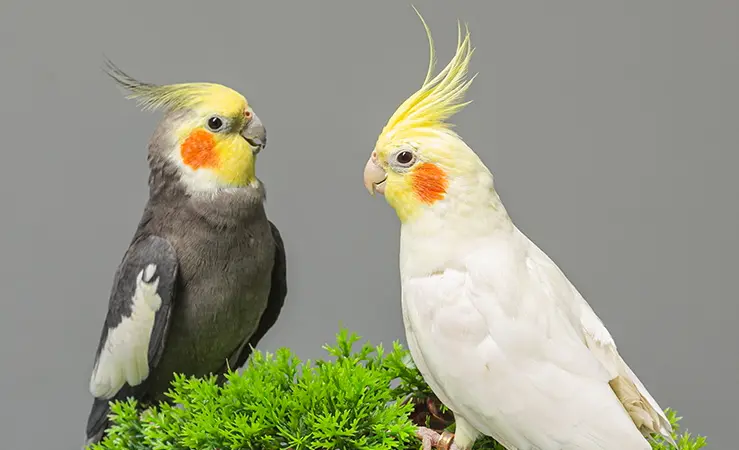
Prepare feeding tools
Cage
Bird cages are divided into two types: home use and outdoor use, depending on the size of the
parrot's
body; If you are not planning to take your parrot outdoors, it is recommended to choose a larger
birdcage to give the parrot ample space for activities.As parrots may use their beaks to open doors,
it
is recommended to purchase a small door lock to prevent parrots from flying away when opening the
door.
You can buy a smaller bird cage when going out, and you also need a release rope that can be tied
directly to the parrot's leg. As for whether the parrot likes the release rope, it depends on the
personality of each parrot.
Tripod
There are two types of Tripods, one with the same thickness and the other with different
thicknesses. It
is recommended that chicks choose Tripods with the same thickness, as those with different
thicknesses
are more suitable for adult birds.If installed in a birdcage, a Tripod can be installed on each side
of
the front and back to visually create a sense of staggered height, making it convenient for parrots
to
play.
Thermal insulation products
Parrots are birds that are sensitive to temperature changes. Excessive changes in temperature,
whether
too cold or too hot, can cause parrots to become sick. Therefore, we need to prepare some insulation
products.If conditions permit, you can purchase a constant temperature box to keep parrots.
Generally,
you can buy a ceramic warm lamp to hang in the cage. If it is a ventilated environment, a cover is
also
needed to ensure that the temperature inside the cage is comfortable for the parrots.
Other supplies
Small brooms for cleaning bird cages, parrot specific cleaning and disinfection tools, kitchen
scales
for measuring feed weight, and so on.
I hope the above things can provide some help to you during your new breeding period.
Food and drink
Food is mainly divided into staple food and snacks; The main staple food is grains and cereals,
while
snacks include vegetables and fruits, all of which are easily available items. Feeding parrots is
mainly
done by combining regular and quantitative staple foods with irregular snacks, but do not only feed
parrots millet. If you are unsure if a food parrot can be consumed, please do not feed the parrot;
Most
human processed foods, especially milk and chocolate, cannot be fed to parrots.
In terms of drinking water, using tap water for feeding is sufficient, but it is recommended to boil
water, disinfect and cool it before feeding; Regularly check whether there is parrot feces in the
parrot's water cup. Once feces appear, immediately clean the water cup and replace it with new
water;
Regularly clean the parrot's water cup to keep it clean and tidy, and avoid any sticky or slippery
inside the cup.
Feeding environment
The breeding location should be chosen as close to the wall as possible, while avoiding exposure to
sunlight and prolonged exposure to wind vents to prevent parrots from getting sick or even dying due
to
exposure to sunlight or prolonged exposure to wind; Keeping parrots in open spaces can easily cause
them
to feel nervous and scared.
It is recommended to choose rectangular metal bird cages for breeding. Due to the destructive power
of
parrot beaks, it is best not to use bird cages made of wood or bamboo; In terms of selecting the
size of
the birdcage, it is recommended to use a birdcage with a minimum size of 40cm * 30cm * 30cm for
small
parrots; For varieties with large body size or long tail feathers; It is recommended to choose a
birdcage with a minimum size of 50cm * 35cm * 35cm. If conditions permit, the larger the size of the
birdcage, the better; Remember to regularly clean and maintain the cleanliness and hygiene of the
birdcage to reduce the risk of parrot diseases. Parrots are highly intelligent birds, and some
parrots
use their beaks to open the birdcage and escape, so remember to buy a lock to lock the birdcage when
no
one is watching over the parrot.
Habit
Parrots like to chirp in the morning and evening. If the chirping affects your or your neighbor's
daily
life, you can cover the birdcage with a blackout cloth. When the light becomes dim, the parrot will
stop
chirping.
Parrots are a type of bird that loves to fly. If a parrot is raised in a birdcage since childhood,
it
will not get too close to its owner; Taking the parrot out of the cage recklessly can also easily
startle the parrot, causing it to fly away and be lost. Even parrots that have been personally
raised by
their owners since childhood can be lost due to the birds' flying habits. Therefore, before taking
parrots out for play, remember to trim their feathers to prevent them from flying too high or too
far
and losing them. If you don't want to trim your feathers, you can purchase a release rope to prevent
the
parrot from getting lost. Remember to close doors and windows when interacting with the parrot at
home.
How to choose a fish tank
For beginners who have just started raising fish, there are two main types of fish tanks they come
into contact with: bare tanks and finished tanks; It is not recommended for beginners to choose
expensive large cabinet style fish tanks, as maintaining a large fish tank can be a difficult task
for beginners.
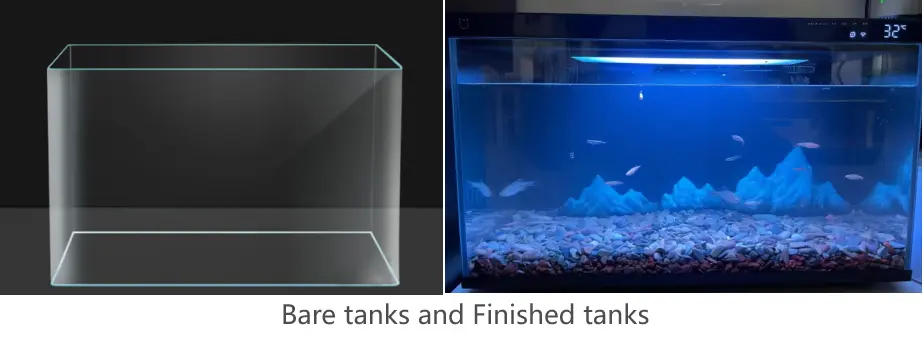
The advantage of a bare tank is its great degree of freedom, allowing for the free selection of fish
tank accessories, convenient landscaping, and strong adaptability. Therefore, one can customize the
scenery according to their own ideas. But its drawback is that it requires beginners to have a
certain
understanding of fish tank equipment, and after matching it with fish tank accessories, the overall
expenses are higher compared to purchasing a finished fish tank.
The advantages of finished fish tanks are: complete basic equipment, easy and convenient to use, and
overall relatively cheap price; For beginners, purchasing a finished fish tank directly can save a
lot
of trouble. But its disadvantage is that small finished fish tanks basically use a three in one
filtration, which has poor filtration effect. Moreover, because they are finished tanks, they often
choose basic equipment of average quality to save costs, and their own modifiability is poor.
Regardless of which type of fish tank you choose, you need to clean, disinfect, and dry the tank
before
using it.
Selection of filtering equipment
What filtering method should beginners choose? Here, it is recommended that beginners can choose
between
external filter barrels and external filters; The advantage of using an external filter bucket for
filtration is that it does not take up much space inside the fish tank, has good biochemical
filtration
effect, does not require regular cleaning of the filter material, and has low noise; The
disadvantage
lies in; Because the filter material is in a sealed filter cartridge, cleaning the filter material
is
more complicated. The advantage of external filtering is that it is cheap, easy to use, and does not
require any installation skills. It can be directly hung and used; The disadvantage is that it is
suitable for small-sized fish tanks with average filtration effect, and the filter cotton or filter
material needs to be cleaned regularly.
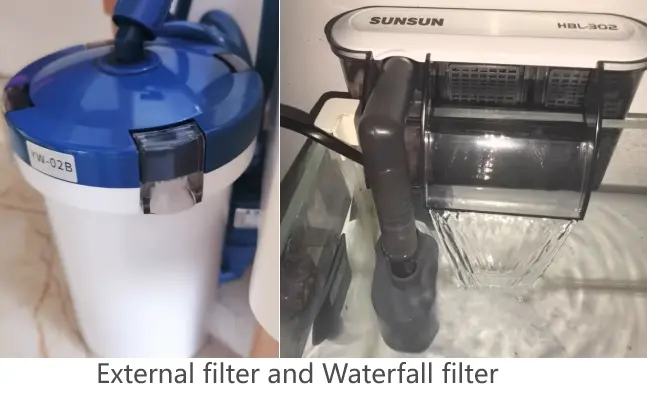
Over water and over temperature
Unlike humans, which have strong adaptability, fish are very sensitive to temperature and water
quality.
Therefore, it is important not to pour newly purchased fish directly into the fish tank. New fish
should
not suddenly enter a new water temperature and water quality environment; It may cause fish to get
sick,
or it may cause death. So in order to gradually adapt to the water quality environment of the fish
tank
and improve the survival rate of new fish, we need to carry out a step of "over water and over
temperature".
Firstly, "over temperature" by placing the container containing the purchased fish and the water
inside
the container into a plastic bag, then placing it in the fish tank and letting it sit for 45-60
minutes
until the water temperature inside the plastic bag gradually matches the water temperature inside
the
fish tank; When the water temperature reaches the same level, it is necessary to perform "water
passing". First, prepare a regular water cup, take out 1/3 cup of old water from the fish tank, pour
it
into a new fish bag, and let it stand for 5 minutes. Then, after 5 minutes, pour out 1/3 cup of
water
from the bag, and then pour in 1/3 cup of old water from the fish tank. Continue to let it stand for
5
minutes. Repeat this process about 10 times, and observe the status of the new fish. If there is any
abnormality in the fish, stop water passing immediately. Then isolate the abnormal fish and let it
stand
for a period of time until it returns to normal before water passing. If the fish are not abnormal,
you
can use a fishing net to put the fish into the fish tank. Do not pour the water in the bag into the
fish
tank together to prevent water from entering the bag. The water is contaminated with cross infection
of
bacteria into the fish tank.
The above are a few steps that beginners should prepare for when starting to fish farming.
The biggest concern for beginners in fish farming is what kind of fish are suitable for themselves
and
what kind of fish are easy to raise; If you don't choose the right fish at the beginning and
frequently
cause the fish to die, which undermines your confidence, you may not be able to keep fish in the
future.
So what entry-level ornamental fish is suitable for novice fish enthusiasts to keep?
1.Goldfish:The first choice for beginners is naturally goldfish, because not only is it cheap, but
it is
also very easy to raise. You only need to provide a tank of clean water to feed it, and it is almost
not
picky about feed. It can eat any common food in daily life. If you really don't know what to feed,
it
will also eat when the fallen leaves on the lawn outside the house are torn apart and put into the
water. It belongs to a breed that is very beginner friendly.
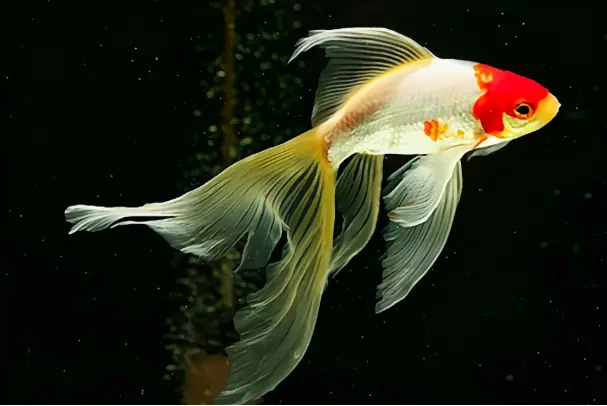
2.Trichogaster trichopterus:It is a very easy to raise fish with a beautiful appearance and
relatively low price; Strong adaptability to water quality, it will actively float to the surface to
breathe when there is a lack of oxygen in the water; Mild temperament, but able to attack smaller
fish than oneself. It is recommended to mix with fish of similar size, have low food requirements,
and enjoy eating floating feed on the water surface; Recommended for beginners to raise.
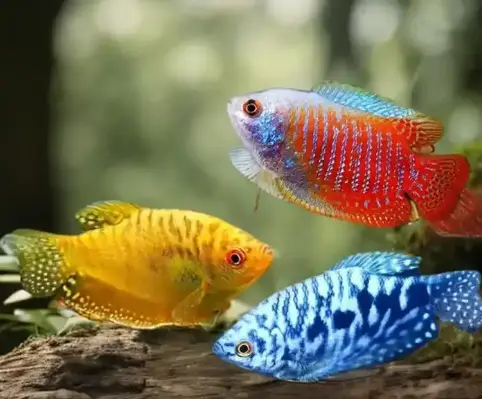
3.Corydoras melanotaenia:Corydoras melanotaenia belongs to benthic fish species, which have strong
disease resistance, strong feeding desire, and are not picky about food but have strong competition
for
food. Usually, Corydoras melanotaenia hides and rests in a hiding place. They only become lively and
active when eating, and at the same time, they also like to rummage through the sand at the bottom
of
the fish tank to find food residues, which is a good helper to help you clean the bottom of the fish
tank.
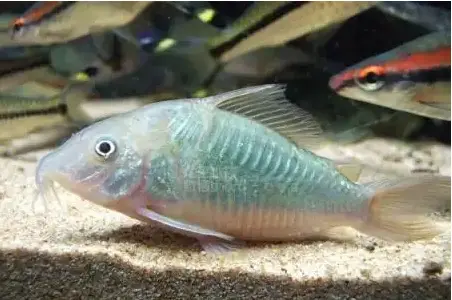
4.Gold ancistrus:Golden Beard is a good choice for beginners to raise fish. It belongs to the
tropical fish category, with bright colors and strong ornamental value. At the same time, it has a
strong vitality, a gentle and timid personality, and will not attack other fish, making it suitable
for mixed breeding with other fish. I like hidden places. Gold ancistrus is a nocturnal fish that is
generally active at night and feeds on algae and sediment at the bottom of the fish tank. It has
strong algae removal ability and helps maintain the cleanliness of the fish tank. It can be kept as
2-3 tool fish
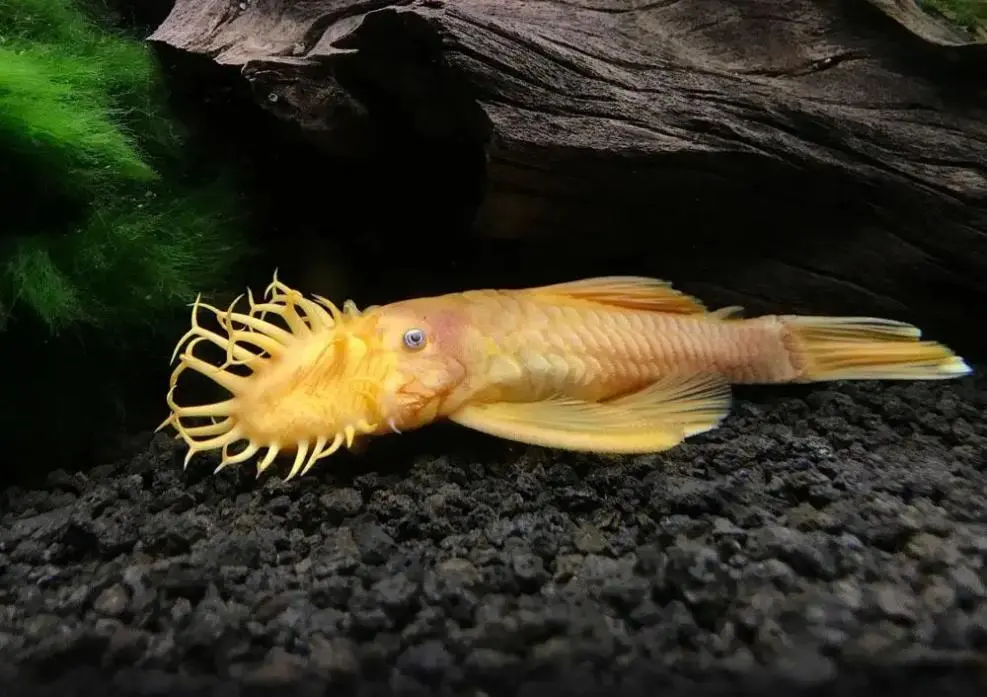
5.Mini parrot:If you want to observe the process of fish reproduction; You can choose mini parrots,
which have strong physique, low requirements for water quality and food, and can be consumed as long
as the food particles are of appropriate size. They are considered as beginner breeds of breeding
fish; It is worth noting that mini parrots reproduce quickly and have strong aggression. It is
recommended to keep them separately and pay attention to supplementing food. Mini parrots have a
habit of swallowing their young when hungry.
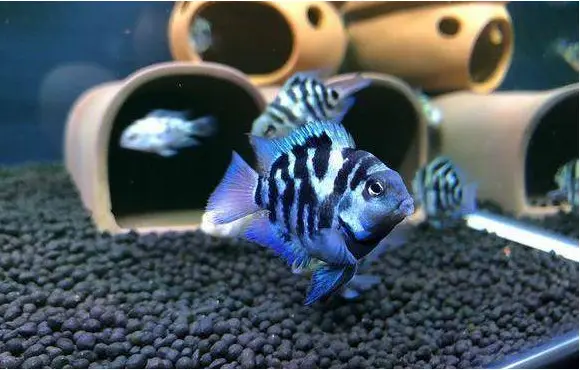
Well, the above are some fish recommendations for novices. I hope they can help you in your fish
farming career.












